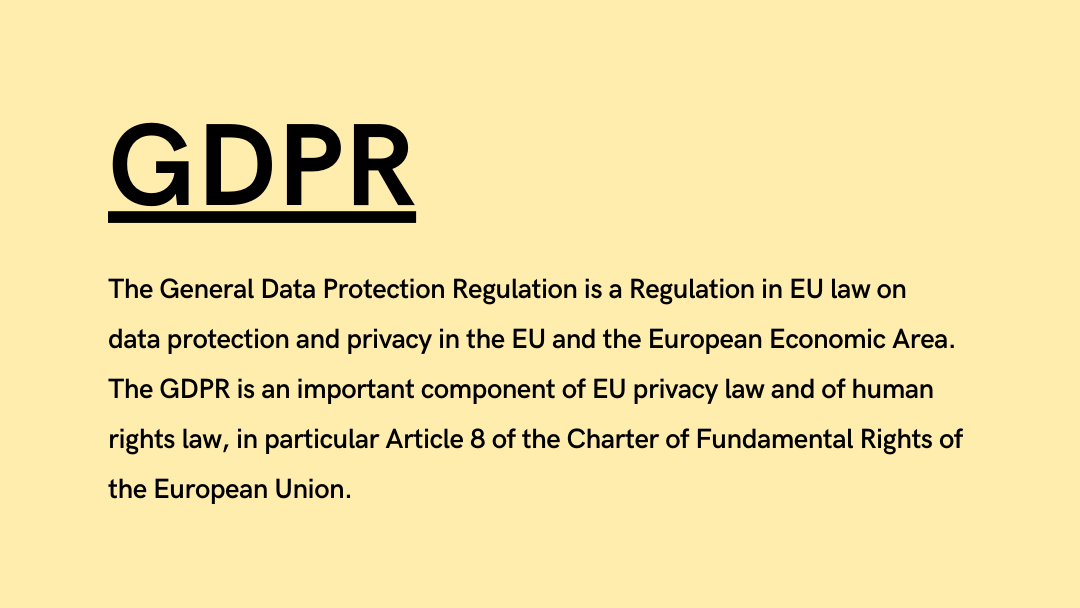GDPR Compliance: A guide for SAAS products

Unraveling the Complexity of GDPR
The General Data Protection Regulation (GDPR) has redefined the global landscape for privacy and data protection. Since its implementation on May 25, 2018, businesses operating in or serving customers in the European Union (EU) have grappled with the practicalities of compliance. As a Software as a Service (SaaS) company, particularly one operating on a public cloud infrastructure, understanding the implications of GDPR is vital.
Defining GDPR and its Objectives
GDPR is a comprehensive data protection law enacted by the EU, replacing the Data Protection Directive of 1995. Its principal aim is to standardize data protection laws across EU member states, providing EU citizens with greater control over their personal data. Fundamentally, it enforces stricter rules concerning the collection, storage, and processing of personal data, mandating businesses to uphold the principles of transparency, accountability, and security.
GDPR’s Relevance to SaaS Companies
For SaaS companies, GDPR compliance is not merely a regulatory obligation but a strategic imperative. As SaaS platforms often process significant volumes of user data, ensuring adherence to GDPR can enhance customer trust and brand reputation, while avoiding hefty penalties.
Under GDPR, SaaS providers are typically classified as ‘data processors’. They are entrusted with customer data and are obligated to process it as per their customer’s instructions – who are the ‘data controllers’. This distinction implies that while SaaS companies do not own the data, they bear substantial responsibility for its secure and lawful handling.
The Impact of Public Cloud Infrastructure on GDPR Compliance
Public cloud infrastructures have revolutionized the way SaaS businesses operate, providing scalability, cost-effectiveness, and ease of access. However, they also introduce unique challenges in maintaining GDPR compliance.
Firstly, data sovereignty becomes a critical consideration. Given the distributed nature of cloud services, customer data may be stored or processed in multiple locations worldwide, potentially outside the EU. If data is transferred outside the European Economic Area (EEA), companies must ensure the recipient country offers an adequate level of data protection.
Secondly, shared responsibility models inherent in public cloud services complicate GDPR compliance. While cloud providers are responsible for the security of the cloud itself, the customer retains responsibility for the security of what they put in the cloud, including personal data.
Key Strategies for Ensuring GDPR Compliance
Transparency and Communication
Articulating a clear, GDPR-compliant privacy policy to your users is paramount. This should explain the nature of the data collected, its purpose, and how it is processed and stored. As a SaaS company, you also need to provide clear instructions to customers regarding the responsibilities they share in protecting their data.
Security Measures
Implement robust security measures to safeguard user data. This could include data encryption, access controls, and regular vulnerability assessments. Additionally, ensure that your public cloud provider adheres to stringent security standards and provides tools to support your GDPR compliance efforts.
Data Minimization and Purpose Limitation
Adhere to the GDPR principles of ‘data minimization’ and ‘purpose limitation’. Collect only the data necessary for your service, use it solely for its intended purpose, and store it only for as long as necessary.
Vendor Compliance
As the saying goes, a chain is only as strong as its weakest link. Make sure your cloud provider, as well as any other third-party vendors involved in processing personal data, are GDPR compliant.
Incident Response Plan
Establish a robust incident response plan to handle any data breaches. GDPR mandates that breaches must be reported within 72 hours of discovery, necessitating a well-planned, rapid response mechanism.
The Road Ahead
Achieving GDPR compliance in a SaaS environment, particularly when utilizing a public cloud infrastructure, demands ongoing commitment. It involves a blend of regulatory understanding, strategic planning, technology deployment, and vendor management. However, the effort is well worth it, yielding not just regulatory compliance, but also robust data protection that builds customer trust and loyalty.